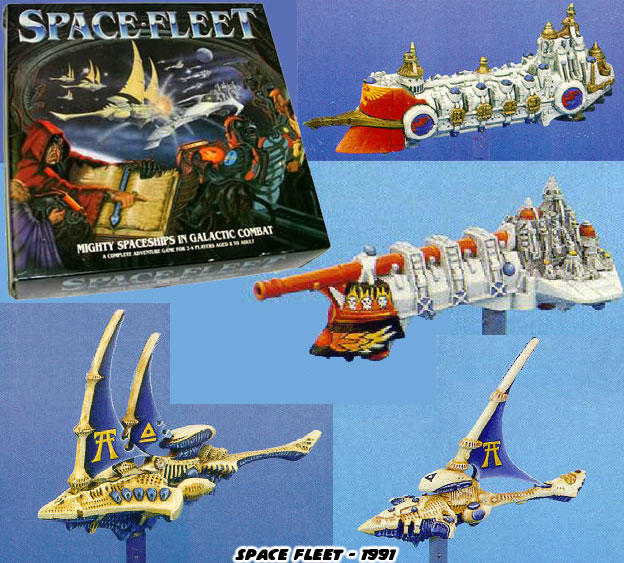
Gamers were invited to pick a side in a space battle featuring the Eldar and Imperial Navy. The ships featured within were wild designs, They looked like floating cities as much as they did battleships. This was for a reason. In 40K every battle for dominance in space required war machines that were impossible to imagine. The ships featured in Space Fleet were massive. The biggest of which could actually transport several of the biggest Titans created by the Forge Worlds. I'm sure many of you were wondering how the Empire managed to move the Titans from planet to planet. Well, it was the job of the Imperial Navy to do that. Players were doing battles with ships large enough to house several of our modern aircraft carriers. It was a wonderful genre and one of the few that Games Workshop helped flesh out.
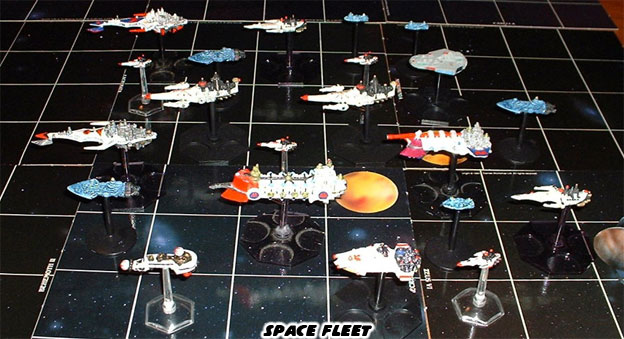
Space Fleet contained pre-printed tiles of outer space and grids that could be arranged in any pattern so that the player would never run out of "space" while playing. Like the other boxed sets it was easy for audiences to get into this game and even share it with their friends. There is a great blog on the history of Space Fleet that I recommend you check out. Despite the uniqueness of the title it never really took off. Games Workshop did begin including scenarios for their 40K systems featuring the space ships they had revealed in Space Fleet. At the end of the decade the studio decided to give the genre another go. This time audiences were paying attention.
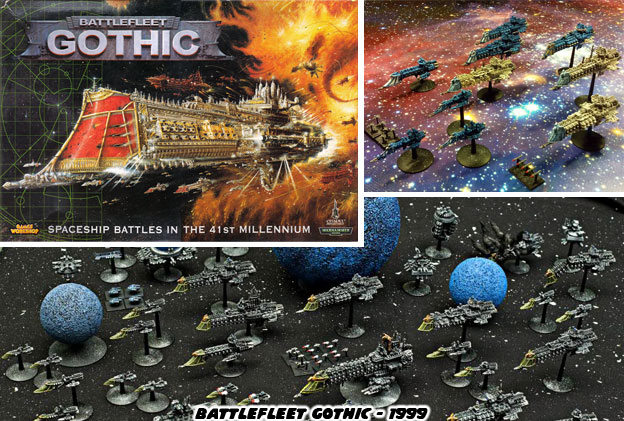
Battlefleet Gothic was released in 1999. With it came a greatly expanded universe and set of rules that complimented the small attack fighters as well as super destroyers from the Imperial Navy. Along with it came rules for Chaos fleets as well as those from some aliens as well. Ships could be armed with an assortment of weapons, their effectiveness depended on the opponents armor, range, obstacles and a number of other factors. There was a lot of strategy involved with the game just as there was with the more open systems from GW. Fans of 40K, and especially the Epic rules were all over the system. Hobbyists found themselves creating planets and asteroid belts to use on homemade outer space placemats. The models that Citadel released were insanely good. The ship designs from GW were completely unlike anything out there. Nothing in Star Wars or Star Trek could compare to the Gothic-inspired space cruisers. These ships were ornamented with statues and reliefs, they looked like floating cathedrals. They belied their awesome planet-destroying firepower and ability to transverse the warp.
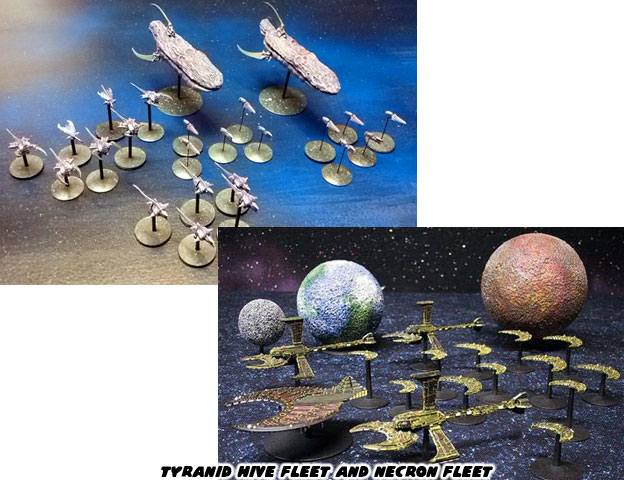
Games Workshop would release expansions to Battlefleet Gothic over the next few years. The studio would add rules for the new aliens introduced into 40K canon from the late '80s through the '90s. The robotic Necrons with their Egyptian-inspired monoliths and the living space fleet of the Tyranids. Orks would have battle barges and even access to the occasional Space Hulk. The Dark Eldar, Eldar and Empire would engage in battles far more massive than any other science fiction system ever filmed or presented. Near the end of the series publishing there were even ships for the Tau, the last new race introduced to 40K canon. The ships and outer space battles spoken of for years in the 40K novels and game scenarios were much easier to visualize thanks to an actual game system. The ships would turn up as backdrops in various animated films and even video games but for years they never had a video game to call their own. That was of course until Games Workshop announced Battlefleet Gothic Armada at the end of 2015. Published by Focus Home Interactive and developed by Tindalos Interactive, it looked to capture everything that made the tabletop game so memorable.
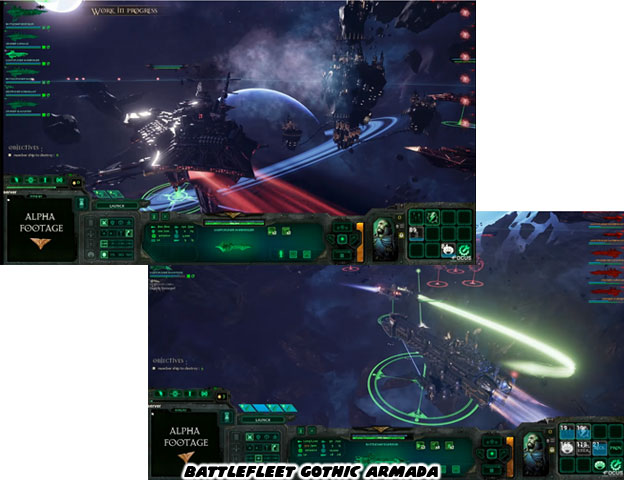
The game would start off small, Imperial Navy versus Chaos, Orks and Eldar. It would hopefully get expansions if it proved to be successful. There was no reason to doubt the future success of the game as it seemed to be capturing all of the details from the tabletop system. It was something to see the ships flying around in three-dimensional space in the pre-alpha footage. It was how I always imagined it must have looked like live. Outer space combat had a more naval feel in 40K than in any other system. Ships could set traps, sort of like mines in space. As well as they could cloak in gas clouds and surprise opponents like a submarine. There were countermeasures and technology that allowed the battleship to find the hidden opponents, the space equivalent of sonar. Battlefleet Gothic Armada went so far as to capture the "rewards" that Chaos would bestow upon their champions. Ships would twist and change shape thanks to the ruinous powers of the warp, which Chaos had sway in. The ships from the legions that turned traitor against the emperor no longer looked like those from the Imperial Navy. They were instead brutal reminders of a particular Chaos God. Perhaps covered in gigantic skull effigies in honor of Khorne or spewing poison throughout the cosmos in favor of Nurgle. It would be interesting to see how these blessings would help the Chaos fleet in battle.
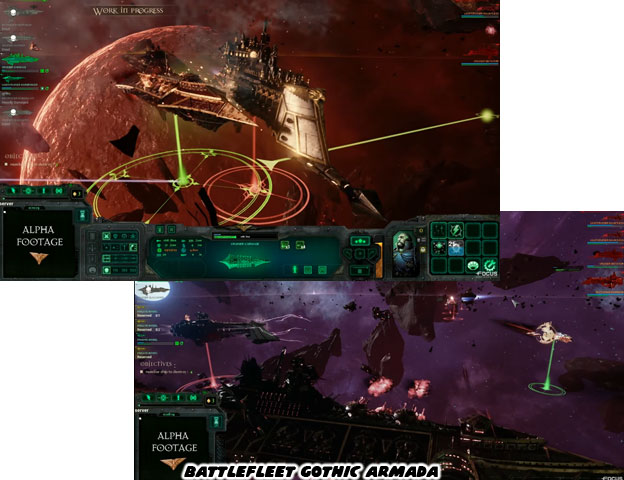
I have no doubt that this will be a great gateway to the Warhammer 40,000 universe. A few years prior to Battlefleet Gothic but after Space Fleet there was another system from Games Workshop that captured the was of ship combat. Only this was set in the ancient world rather than outer space. In the next blog we will look at this game. As always if you enjoyed this blog and would like to sponsor me please visit my Patreon page and consider donating each month, even as little as $1 would help make better blogs and even podcasts!

No comments:
Post a Comment